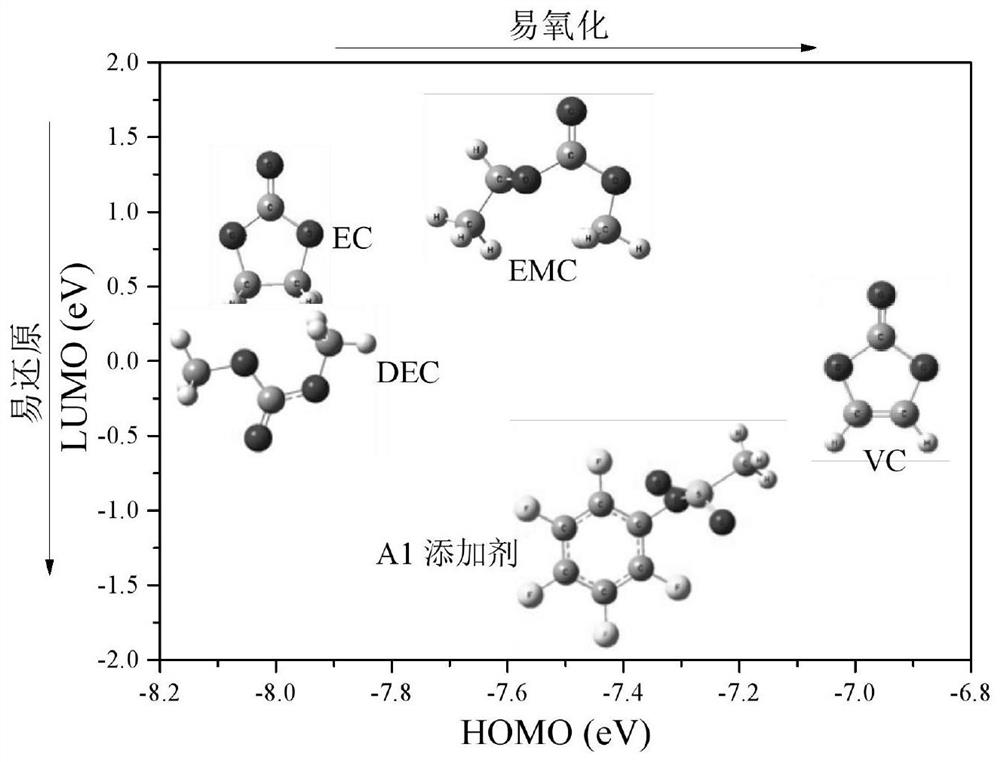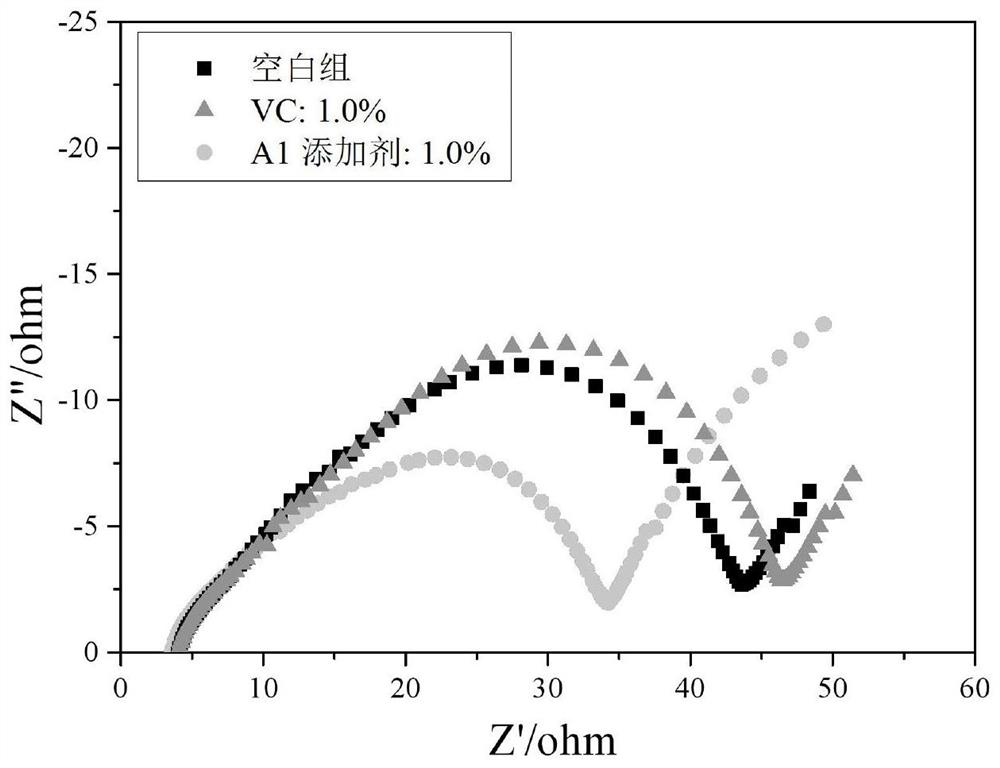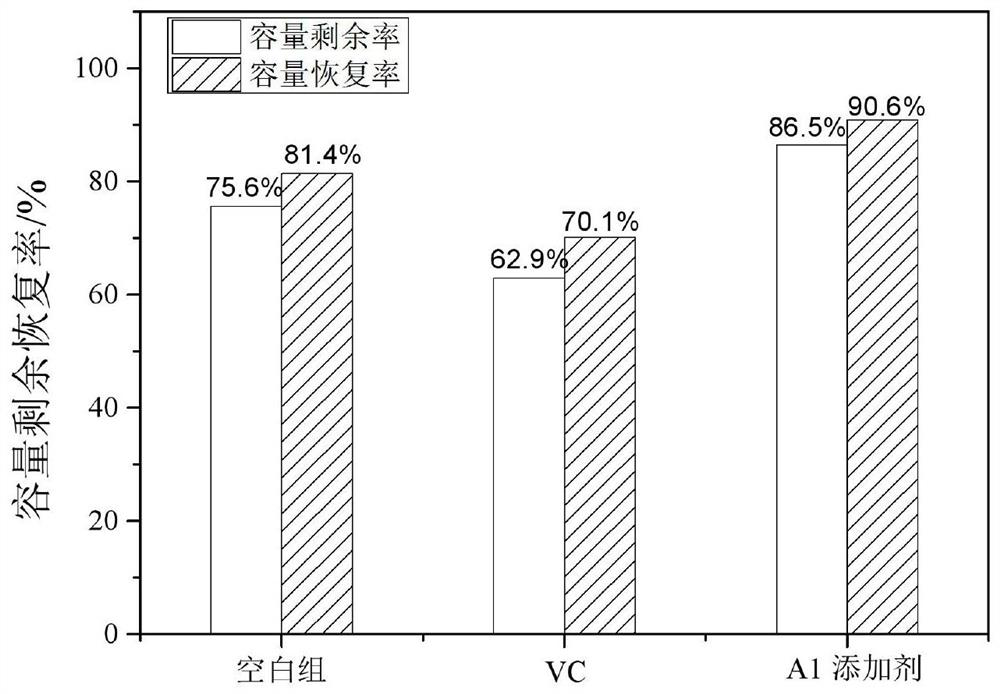A battery electrolyte additive, electrolyte and high-nickel ternary lithium-ion battery with both high and low temperature performance
An electrolyte additive and additive technology, applied in electrical components, secondary batteries, circuits, etc., can solve the problems of high and low temperature performance of the battery, and achieve the effects of improving room temperature cycle performance, increasing rate performance, and reducing direct contact
- Summary
- Abstract
- Description
- Claims
- Application Information
AI Technical Summary
Problems solved by technology
Method used
Image
Examples
Embodiment 1
[0050] Electrolyte preparation: In a glove box filled with argon, mix ethylene carbonate, dimethyl carbonate and propylene carbonate according to the mass ratio of EC:DMC:EMC=1:1:1, and then slowly add to the mixed solution Add 12.5wt% lithium hexafluorophosphate (LiPF 6 ), 0.5wt% lithium difluorophosphate (LiPO 2 f 2 ) and 2.5wt% lithium bisfluorosulfonimide (LiFSI) based on the total weight of the electrolyte, and finally add 1.0wt% compound A with the structure shown in formula I and 0.5wt% compound A with the formula II based on the total weight of the electrolyte Compound B of the structure (see Table 1 for the specific selection of compound A and B), 1.0wt% fluoroethylene carbonate (FEC) and 2.0wt% vinyl sulfate (DTD), and the lithium-ion battery of Example 1 was obtained after uniform stirring electrolyte.
[0051] Preparation of soft-pack battery: stack the prepared positive electrode sheet, separator, and negative electrode sheet in order, so that the separator is ...
Embodiment 2-9
[0053] Embodiment 2-9 and comparative example 1-5
[0054] In Examples 2-9 and Comparative Examples 1-5, except that the composition ratio of the components of the electrolyte is in accordance with the additives shown in Table 1, the others are the same as in Example 1.
[0055] Table 1 Embodiment 1-9 and the composition ratio of each component of the electrolyte of comparative example 1-5
[0056]
[0057]
[0058] Performance Testing
[0059] Carry out performance test to the full battery that embodiment 1-9 and comparative example 1-5 make:
[0060] (1) Cycling performance test at room temperature: At 25°C, charge the divided battery to 4.2V at 1C constant current and constant voltage, with a cut-off current of 0.05C, then discharge at 1C constant current to 3.0V, and cycle accordingly. / After 1000 cycles of discharge, calculate the 1000th cycle capacity retention rate, the calculation formula is as follows:
[0061] 1000th cycle capacity retention rate (%)=(1000t...
PUM
| Property | Measurement | Unit |
|---|---|---|
| recovery rate | aaaaa | aaaaa |
Abstract
Description
Claims
Application Information
 Login to View More
Login to View More - R&D
- Intellectual Property
- Life Sciences
- Materials
- Tech Scout
- Unparalleled Data Quality
- Higher Quality Content
- 60% Fewer Hallucinations
Browse by: Latest US Patents, China's latest patents, Technical Efficacy Thesaurus, Application Domain, Technology Topic, Popular Technical Reports.
© 2025 PatSnap. All rights reserved.Legal|Privacy policy|Modern Slavery Act Transparency Statement|Sitemap|About US| Contact US: help@patsnap.com



